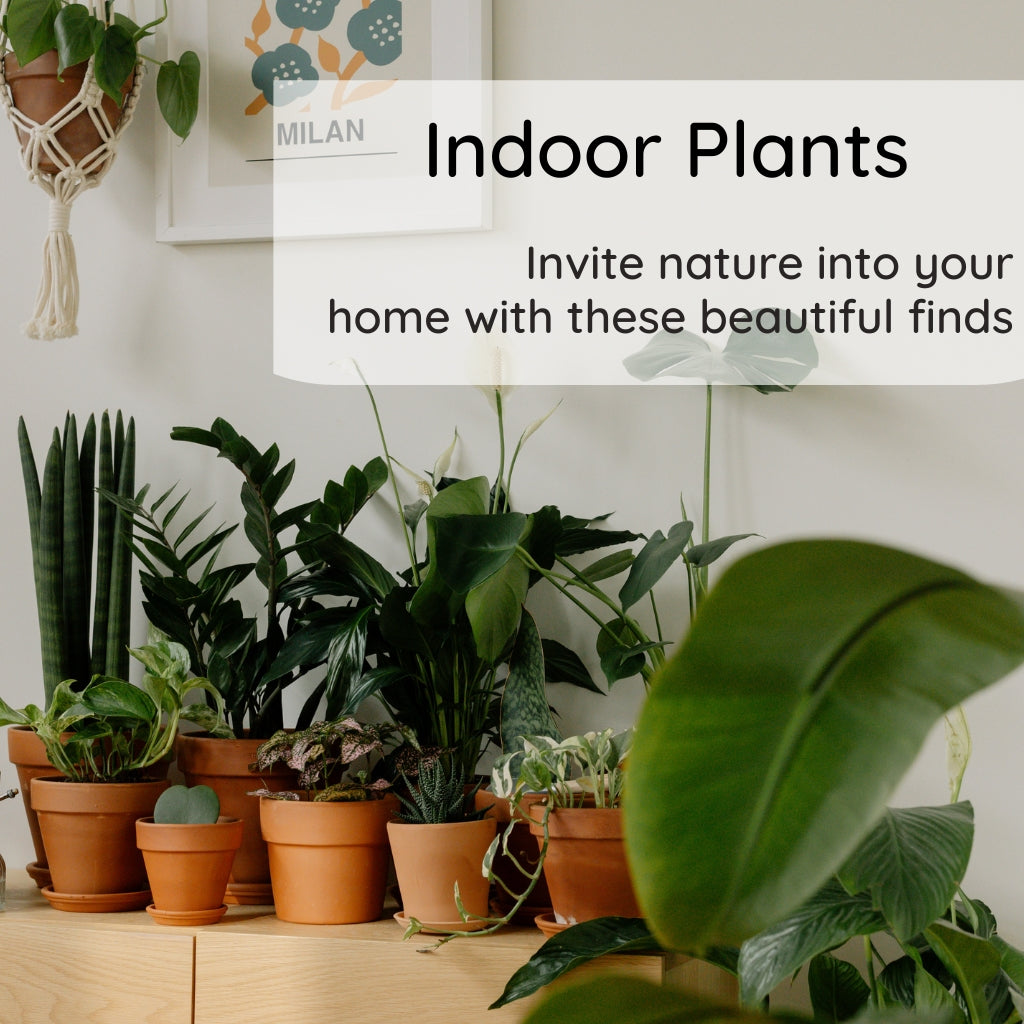- Discover the best 10 indoor plants for beginners which are easy to maintain and fast growing. Full of expert tips as to which house plants will survive best in your homes, these plants are not only best for décor but they also provide clean air, better health and help to Zen your space by their presence. Also, many of these plants does not require much hustle as they require nominal care.
- Plants such as pothos (money plants), Palms and Peace lily are easy to maintain and grow at good speed, these plants are perfect for indoor balconies or living areas where some sunlight can enter and help the plants to grow and thrive. Succulents are best for your rooms and closed space where little sunlight comes such as bathrooms.
- Say good bye to your boring empty space and elevate those space with these affordable and popular house plants! Let us help you to become a plant parent and never look back!
-
Pothos Plants :
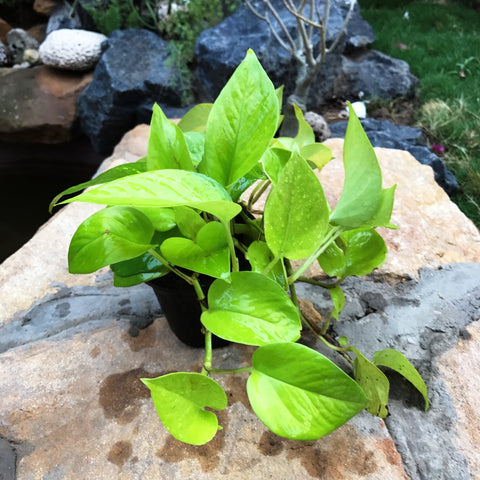
These plants are also known as the money plants, there are plenty of varieties available of these plants such as Pothos Silk Plant which is quite rare, with small leaves or king money plant which has big leaves, Pothos Plants can live for many years with basic care and are super adaptable, they can survive in various lights and soil! They can grow in Low-light areas or those with only fluorescent lighting, it's an excellent houseplant for offices and dorm rooms.
Care Instructions: Pothos/money plant is the perfect houseplant for beginners and for people will less time. There is no expertise needed in caring for and growing this plant as it can survive in bright sun as well as semi shaded areas. Although avoiding direct afternoon sun is better. It can be grown in soil, jars or water filled bottles too.
Pothos are subject to root rot so it’s better to keep them on the dry side rather than too wet. Pothos likes to have its soil dry out between waterings and therefore accepts erratic watering too. The leaves droop when the plant is thirsty! Grow it in a well-drained pot and fertilize the plant once a month.
2. Palm plant :

There are many types of palm plants that you can grow indoors to add a bold & tropical look to your home's interior. Most members of the palm (or Arecaceae) family require minimal maintenance. Several types of indoor palms, including the areca palm and parlor palm, thrive in household environments quite well. Some indoor palm plants can even tolerate low light, though this usually will result in weaker growth.
Care Instruction: Palm plants are tolerant of being under watered, but they will grow their best when watered on a regular basis. Ideally, palm plants prefer it when their soil is kept evenly moist, especially during the summer months (their active growing season). Allow the soil to dry out only slightly between waterings in the summer. During the winter, you can let the soil dry out a bit more between waterings. Be very careful not to overwater though.
Palms love bright filtered or indirect sunlight. Palms can suffer from too much or too little light. Keep them in the balcony or near a window with bright light. Use fertilizer sparingly in summers only.
3. Fern Plant :
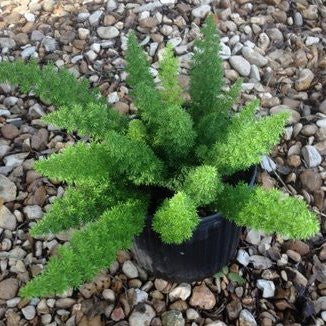
Many types of ferns thrive indoors and add a lush, tropical look to any room. This diverse group of fern plants comes in an array of colours and textures, including delicate, lacy fronds and smooth, substantial foliage. Ferns are the perfect for the small pot or can thrive in the big ones. They can be grown in everything from clay pots to hanging baskets, and they don’t require full sun to thrive. They also make a good ground cover.
Care Instruction: Ferns are low-maintenance and hardy, but they do require a bit of upkeep. Ferns require a lot of indirect bright light and not direct sunlight. You can keep it in balconies but make sure no direct sun falls on the leaves. As the ferns have fragile leaves, they tend to burn.
Ferns in general love humidity. You can spray in the air above the fern and let the mist settle on leaves. Most ferns like an evenly moist soil with regular waterings. Water them daily but just enough to keep the soil moist and not wet. Allowing the soil to dry out between waterings stresses these plants.
4. Peace lily Plant :
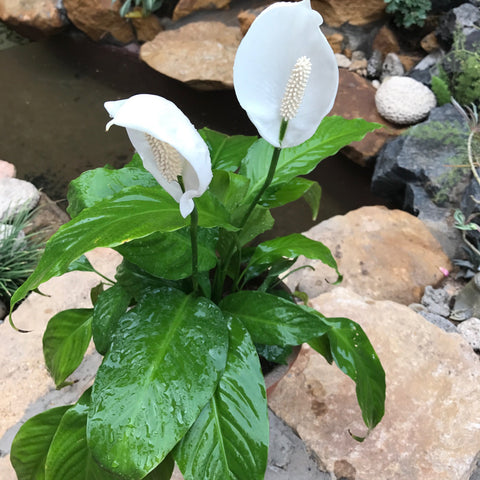
Peace lily is a natural for filling a corner, including those with part sun as well as dark spots. Tuck it into a simple container to let glossy leaves and stately flowers steal the spotlight. The Peace lilies are not true lilies (plant family Liliaceae), but a member of the Araceae family that also includes colocasia, or elephant ear. This beautiful plant can make a perfect indoor plant as it can grow beautiful flowers as well. These plants thrive on the forest floor, receiving dappled sunlight and consistent moisture and humidity by replicating these conditions in the home peace lily plant will be healthy and happy.
Care Instruction: It’s best to keep your Peace Lily in a bright spot, but avoid placing it in direct sunlight as the leaves can get sun burnt. However, keeping it in very low light will affect its bloom and the plant will grow slower.
Peace Lily requires a well drained soil mix. It does best when the soil has a chance to dry out in between waterings. Make sure the soil remains a little moist and not completely dry. You can achieve this by watering a little twice or thrice a week.
5. Snake Plant :
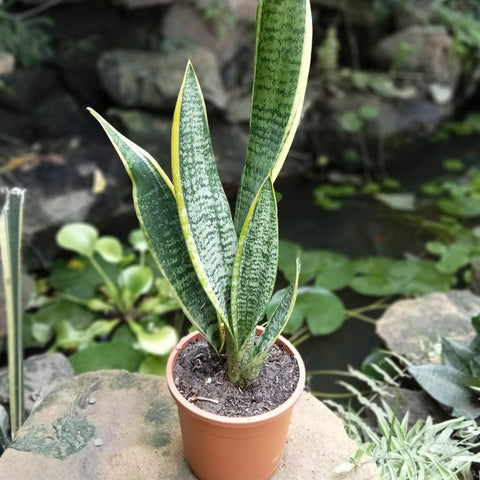
The snake plant, also known as mother-in-law’s tongue, is a succulent that can grow anywhere between 6 inches to several feet. One of the toughest houseplants, snake plants can tolerate most indoor conditions. There are no stems on the snake plant, just tough, thick, upright leaves, which make it an ideal for small spaces. Some dwarf varieties form small rosettes of leaves. The most common foliage showcases shades of green with silver-grey horizontal streaks.
Care Instruction: Good location would be a north-facing window or in front of a bright and sunny window. Although the plant is known to tolerate very low light levels, bright light brings out the colours in the leaves while also keeping it healthy. Keep them away from direct sun.
Allow the soil to go completely dry before watering. When you do water it, make sure to. Water it deeply enough for the water to come out of the drainage hole. Never allow water to stagnate on top of the soil or do not make the soil soggy as that will lead to root rot. You can water it once a week in summers and once in 2 weeks in winters if kept in bright filtered light. After watering the plant, make sure to keep it in a bright area.
6. Succulents :
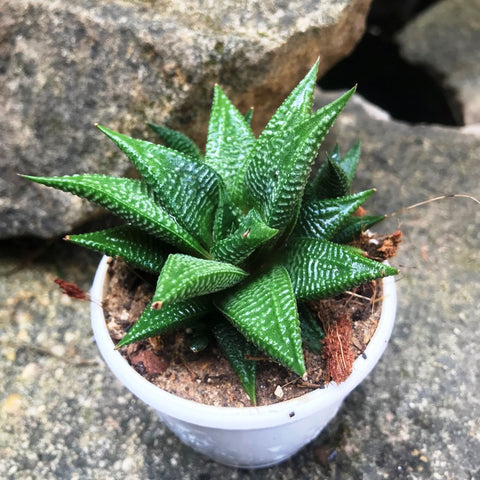
Succulent plants are super attractive yet adapt well to the Indian climate and require very little water on a daily basis. They make the perfect indoor plants for your home, which can be displayed in the living room or on the library study table. These plants are versatile and can be an excellent choice to displayed in urban homes and city spaces. If you're a new plant parent succulents should be your first choice are the easiest to take care of.
Care Instruction: Most succulents need to be watered twice a week during summers and only once in monsoon & winters. Varieties like Haworthias, Crassulas and Gasterias are well suited for low-light indoors and window-sills. If the leaves get too bulky, it is a sign of overwatering & if the leaves look shriveled it is a sign of less watering.
As a general rule of thumb, all the ones with colourful leaves like Echeverias, Sedeveria and Graptopetalum like bright sunlight and semi shade in extreme summers. They cannot be kept indoors or in full shade. All succulents love morning sun. You can fertilize your succulent once a month.
Watering tips : Make sure NOT to water on the plant itself. Water directly in the soil. You can use a cup or a glass to make sure the water does not spray on leaves. When watering, make sure water comes out of the drainage hole.
You can check our video on how to water succulents on : https://youtu.be/GnzodkMYcmg
7. Kokedama Moss balls :
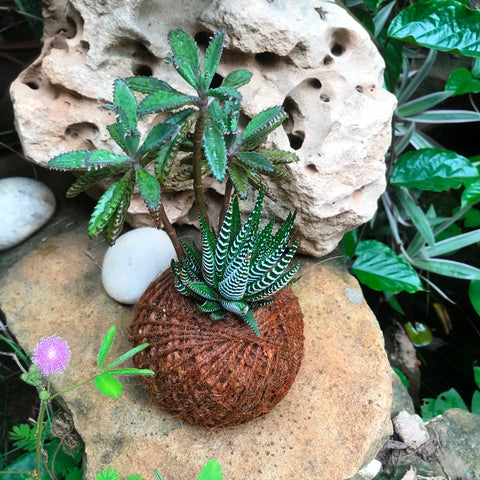
Kokedama is a Japanese bonsai variety that thrives indoors. Kokedama in the living room offers peace, calm and relaxing atmosphere. They have the ability to help you wade off stress, an excellent benefit for the mind, body, and soul. Having this plant, can improve the nighttime air in your bedroom and help you sleep better. Kokedama can be used for hanging purpose or can be used as simple table top. It is a decorative art of encasing a plant’s root in a ball of soil covered with moss.
Care Instruction: Kokedama needs watering only once the moss ball gets dry. If the moss or the soil feels a little moist, avoid watering it. To water it, fill a small bowl/container with water and place your Kokedama in it with the moss getting soaked in the water. If you have bought the tray along with the Kokedama, you can use that also. Allow the moss ball to soak water for 20-30 minutes for it to get fully saturated. Remove the moss ball from the water and gently squeeze it so that the excess water drips out. Keep the moss ball in a bright spot after water.
Kokedama light requirement majorly depends not the type of plant. Sansevieria and Haworthia Kokedamas can be kept anywhere you need, however Kokedama with ferns and other plants will need a bright filtered space.
8. Aglaonema Plants :
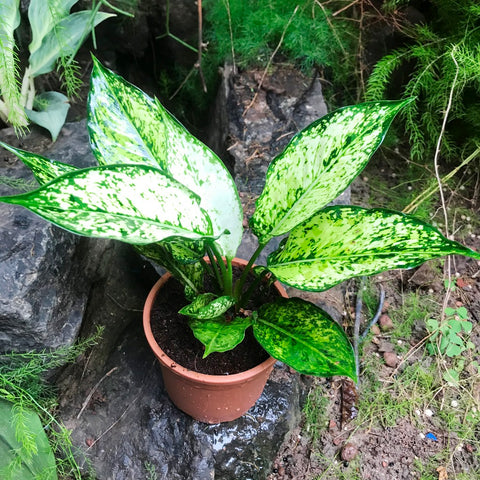
Aglaonemas are slow-growing, attractive, and are great indoor plants as they do not like full sun exposure, great for inside. They prefer warm temperatures and high humidity. They require regular misting, especially during the winter if the humidity is exceptionally dry. Aglaonemas are often vibrant and colorful, with strikingly patterned leaves. They will thrive with low light, they are a perfect choice for less than ideal light conditions or forgetful plant owners.
Care Instructions: Aglaonemas do best in warm, humid and bright conditions. The darker green varieties of aglaonema can grow in near shade, while the variegated varieties require brighter light. Do not expose any aglaonema to direct sunlight as it will burn the leaves.
Water thoroughly in the summer and mist the plant often to raise the humidity. During the winter, reduce watering but do not let the plant dry out completely. Aglaonemas can be potted in well drained soil and should be fertilized twice a month during the growing season.
9. Philodendron Plant :
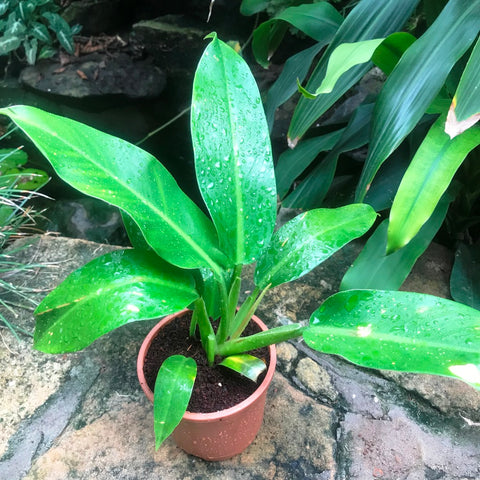
“Philo” means love, whereas “Dendron” means “tree”. The plant was named Philodendron in reference to the fact that it is a “tree hugger” and loves to climb along with trees. Philodendrons have a fast growth rate. They are also a great plant choice to purify the air in your home. Depended on the size and care they can grow from one feet to six feet long and wide as well. There are two basic types of Philodendrons once that can grow as a vine and one that grow upright.
Care Instruction: Foliage plants in general need access to bright indirect sunlight. Avoid keeping them in direct sunlight as it can cause leaves to burn due to extreme sunlight in the afternoon.
Make sure watering is done once the soil goes dry. Although the soil can remain moist, but it should not turn soggy/wet. Having drainage hole in the pots goes a long way in ensuring there is no water stagnating on top of the soil. You can spray the plant occasionally.
Fertilize the plant once a month in summers however Don't feed any fertilizer in winters. Giving fertilizer to the plant ensures nutrients going in which keeps it healthy. Keep an eye on the leaves of the plant to know any symptoms for watering or sunlight.
10. Dieffenbachia Plant :

Dieffenbachia, commonly known as dumb cane or leopard lily, is a type of tropical flowering plants in the family Araceae. Dieffenbachia is a tropical plant that grows well as an indoor plant with abundant indirect light. The Dumb Cane plant is a strong species that will thrive in any light conditions other than direct sunlight. It’s easy to care for style and resilience to neglect to make it a wonderful house plant.
Care Instruction: Foliage plants in general need access to bright indirect sunlight. Avoid keeping them in direct sunlight as it can cause leaves to burn due to extreme sunlight in the afternoon.
Make sure watering is done once the soil goes dry. Although the soil can remain moist, but it should not turn soggy/wet. Having drainage hole in the pots goes a long way in ensuring there is no water stagnating on top of the soil. You can spray the plant occasionally.
Fertilize the plant once a month in summers however Don't feed any fertilizer in winters. Giving fertilizer to the plant ensures nutrients going in which keeps it healthy. Keep an eye on the leaves of the plant to know any symptoms for watering or sunlight.
Indoor plants are the prefect way to make any space lively, these are few of the most famous indoor plants currently. These are best for the new plant owners and for those who do not have much time to maintain plants indoors. Visit myBageecha, one of the top most online nurseries in India, to find more indoor plants best suited for your space!

